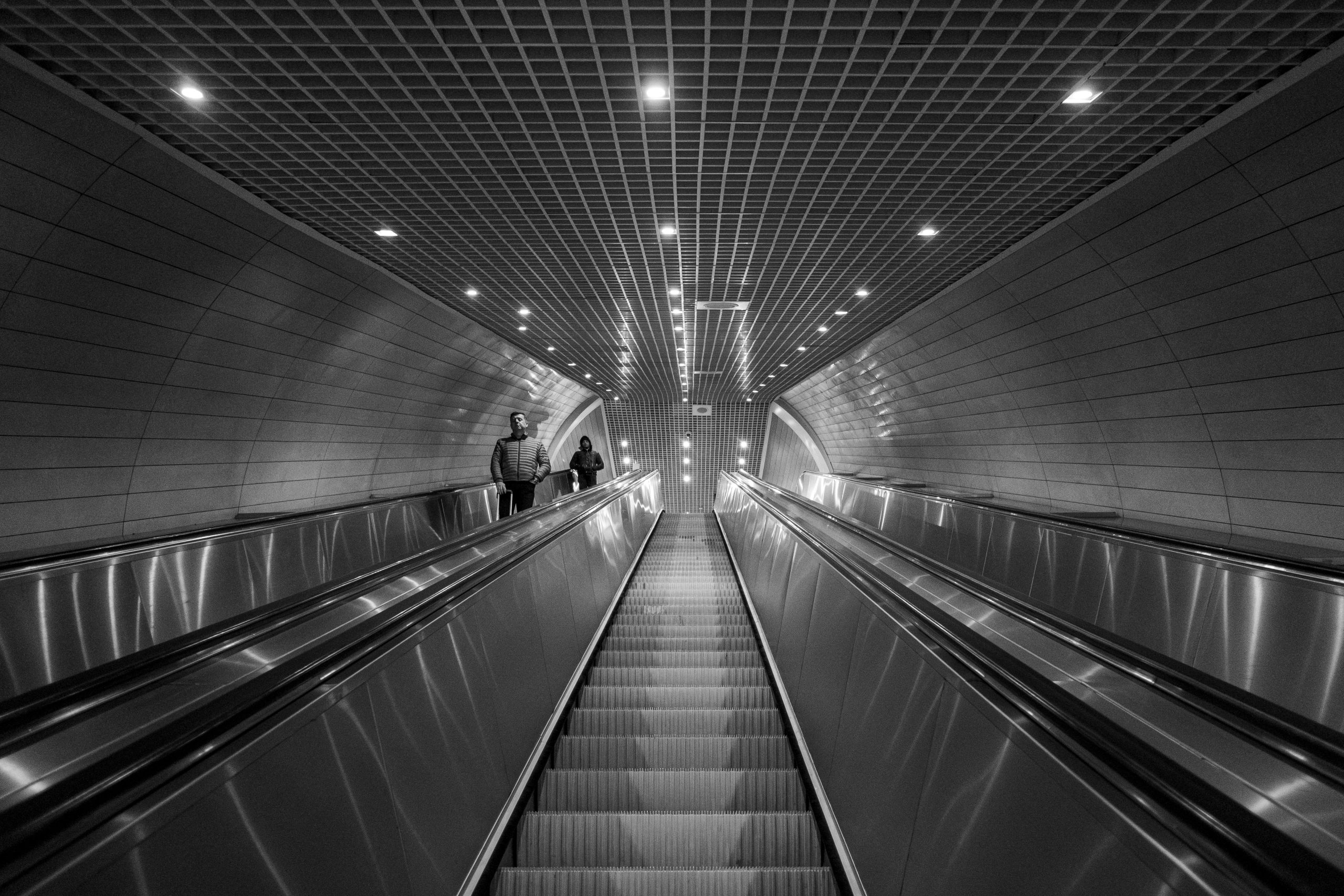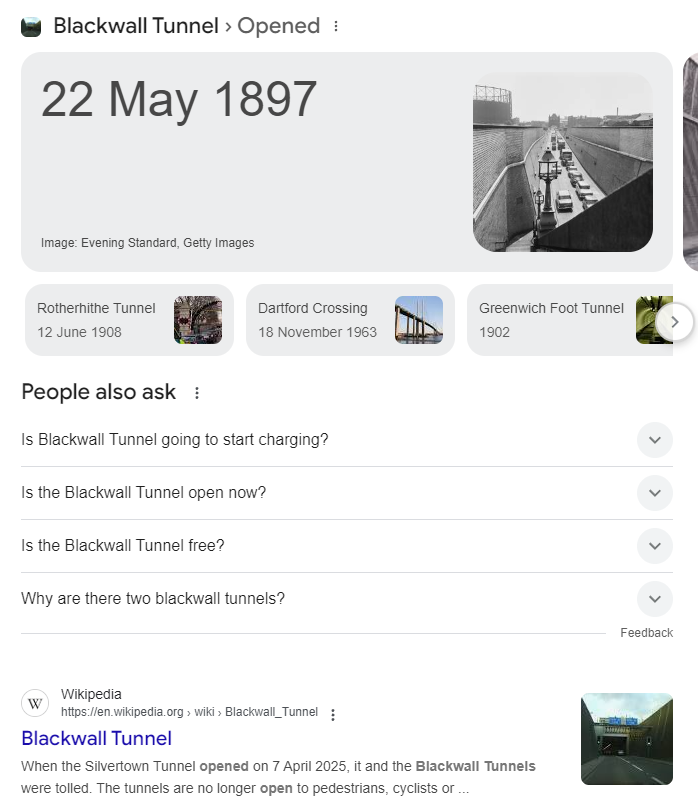The Blackwall Tunnel: A Historic Gateway in London’s Infrastructure
Introduction
On the 14th of April 1897, a significant milestone in London’s transportation history was celebrated—the opening ceremony of the Blackwall Tunnel. Connecting the boroughs of Greenwich and Tower Hamlets, the Blackwall Tunnel revolutionized travel and commerce in East London. This blog post will delve deep into the history, engineering marvel, socio-economic impact, and legacy of the Blackwall Tunnel, highlighting its importance as a vital piece of infrastructure in one of the world’s most bustling metropolitan areas.
Historical Background
The Need for a Tunnel
Prior to the Blackwall Tunnel, the River Thames posed a significant barrier for commuters and commercial traffic traversing East London. The river’s natural width and the industrialization of the surrounding areas meant that ferry services were often overcrowded and insufficient for the growing population. In the late 19th century, London was experiencing a demographic explosion, with the population surging past 5 million. This increase created an urgent need for improved transport links, particularly for heavy commercial vehicles.
Planning and Design
The origins of the Blackwall Tunnel trace back to a 1878 proposal by the Metropolitan Board of Works. After several suggestions and plans were debated, construction officially began in 1892. The engineering team, led by the eminent civil engineer Sir John Wolfe Barry and his assistant, Sir William Arrol, devised a method of tunnel construction known as the “cut-and-cover” technique. The method involved digging a trench along the roadway, building a brick-lined tunnel, and then covering it up to restore the road surface above.
The initial plans featured the construction of two separate tunnels designed to accommodate vehicular traffic in both directions. The design process also accounted for the considerable tidal influence of the River Thames and the need for a proper drainage system, a challenge that would later be solved with innovative methods for managing the water flow within the tunnel.
The Opening Ceremony
A Grand Event
The opening ceremony of the Blackwall Tunnel took place on April 14, 1897, and it was a splendid affair marked by patriotic fervor and civic pride. Thousands of Londoners were in attendance, eagerly awaiting the moment when they could traverse the new structure that promised to transform travel across the Thames. The event was honored by notable dignitaries, including London’s then Lord Mayor, who performed the ceremonial opening of the tunnel.
A parade featuring floats and horse-drawn carriages showcased various industries and cultural aspects of the area, while speeches highlighted the technological advancements represented by the tunnel. It was evident that the Blackwall Tunnel was not merely an engineering accomplishment; it was a symbol of progress and ambition for the city of London.
Early Usage
Immediately after the formal opening, gifted residents were allowed to drive through the new tunnel, and it wasn’t long before the general public was given access. The initial reaction was overwhelmingly positive; the tunnel offered a faster and more efficient route for both passenger and commercial vehicles. With a length of approximately 1.5 miles (2.4 kilometers) and a depth of 70 feet (21 meters), it opened up untapped economic potential between the notoriously disconnected areas of East London.
Engineering Marvel
Design and Specifications
The Blackwall Tunnel was an engineering marvel of its time. The main tunnel bore was constructed with a brick and concrete mix and held together by arches that were designed to be both functional and aesthetically pleasing. Engineers used a series of ventilation shafts to ensure proper airflow within the tunnel, which was crucial for maintaining air quality in such enclosed spaces. Each of these ventilation shafts was strategically placed to manage the accumulation of exhaust fumes from vehicles traveling through the tunnel.
The tunnels were designed to accommodate a range of vehicles, although the initial expectations were for horse-drawn carriages and steam-powered vehicles. As the years progressed, the increase in motor vehicles would push these initial design specifications to their limits.
Innovations in Construction
The construction methods employed for the Blackwall Tunnel were highly innovative for the 1890s. Workers carefully reinforced the tunnel with cast iron segments to prevent collapses, and advanced pumping stations were established to mitigate flooding, a common concern in subterranean construction. The team overcame various challenges, such as dealing with tidal water and ensuring structural integrity across a busy area laden with surface infrastructure.
The use of electricity was rare at the time, yet advancements in electrical engineering helped facilitate the installation of lighting systems within the tunnel, providing a safe and welcoming environment for motorists even after dark.
Socio-Economic Impact
A Boon for Trade
The completion of the Blackwall Tunnel dramatically enhanced trade capabilities in the East London area. Prior to its opening, goods transport was often bottlenecked by the limitations of ferry services. Post-opening, it became possible for trucks and larger vehicles to traverse the Thames with ease, bringing goods into and out of London on a more reliable basis.
The Docklands area, in particular, benefited tremendously from improved access. The bustling port facilities were now conveniently connected to central London and other key road routes, leading to a surge in commercial activity in the region. Businesses could now easily ship products to and from markets, while consumers in East London enjoyed greater access to goods and services.
Urban Development
In the decades that followed the tunnel’s opening, East London underwent significant urban development. Areas around the Blackwall Tunnel saw a rise in residential housing as well as commercial properties, which were partly a response to the enhanced connectivity and accessibility provided by the new infrastructure. The population in East London continued to swell, and the tunnel played an integral role in supporting the city’s growth.
Modernization Efforts
Upgrades and Renovations
As with many historical infrastructure projects, the Blackwall Tunnel has undergone numerous upgrades to accommodate modern standards and changing transportation needs. Over the years, safety facilities have been enhanced, including the implementation of emergency communication systems, CCTV cameras, and modern fire safety equipment.
In the late 20th and early 21st century, traffic management systems were introduced to facilitate the regulation of vehicles entering the tunnel. These modernizations have allowed the Blackwall Tunnel to remain a safe and efficient means of transportation in the ever-evolving landscape of London’s transport network.
Addressing Traffic Challenges
Despite its many advantages, the Blackwall Tunnel has also faced traffic congestion issues, particularly during peak hours. These challenges have raised discussions regarding the need for additional infrastructure investments and the potential for alternate routes. Proposals such as the Silvertown Tunnel, which is slated for construction close to the Blackwall Tunnel, have emerged as a solution to ease congestion and further enhance East London’s connectivity.
Conclusion: Legacy and Significance
The Blackwall Tunnel has become more than just a physical connection between two banks of the River Thames; it has evolved into an enduring symbol of London’s resilience, innovation, and growth. Since its opening in 1897, the tunnel has facilitated trade, improved accessibility, and supported urban development—transforming the socio-economic landscape of East London in the process.
As we look to the future, it is crucial to recognize the importance of maintaining and modernizing such vital pieces of infrastructure. The Blackwall Tunnel serves as a reminder of the pioneering spirit that has defined London’s approach to urban development, and it continues to inform our endeavors as we navigate through the complexities of modern urban living.
From its inception to its ongoing relevance today, the Blackwall Tunnel encapsulates the essence of a city constantly in motion. Whether as a commuter, a business owner, or a historian, Londoners and visitors alike cannot help but marvel at the foresight and ingenuity that brought this tunnel to life—a historical achievement that underscores the dynamic nature of one of the world’s great cities.


What a fascinating exploration of the Blackwall Tunnel’s history and impact! It’s incredible to see how an infrastructure project from the late 19th century continues to influence the socio-economic landscape of East London today.
One aspect that particularly stands out is the method of construction used for the tunnel—“cut-and-cover.” This technique not only facilitated swift construction but also demonstrates the innovative spirit of the time, as it addressed practical challenges like the river’s tidal influences.
Moreover, the socio-economic ripple effects of the tunnel are still relevant, especially in discussions about modern urban development. The mention of the Silvertown Tunnel highlights an important point: as cities evolve, infrastructure must also adapt to meet new demands. It raises the question of how we balance historical preservation with the necessity for modernization.
The Blackwall Tunnel serves as a case study in resilience and adaptability, and I believe it’s crucial for current planners to learn from its legacy. As we face contemporary challenges related to traffic congestion and environmental sustainability, insights from the past can guide us toward more effective and thoughtful solutions.
Thank you for shedding light on this remarkable piece of London’s history! I look forward to seeing how the narrative of the Blackwall Tunnel continues to evolve in the future.
Insightful Reflection on the Blackwall Tunnel’s Impact
As a London resident who frequently traverses the Blackwall Tunnel, I can’t help but appreciate the profound impact this engineering marvel has had on our daily lives. It’s not just a tunnel; it’s a lifeline connecting diverse communities and fueling economic growth in East London. Here are a few aspects that I believe truly highlight its significance:
Hi
You don’t say where you obtained the information about the opening of the Blackwall Tunnel, but I believe it to be incorrect. My information comes from an invitation ticket and supporting document to the opening that was attended by a family predecessor.
Quoting from the Ceremonial document ‘ the opening of the Blackwall Tunnel by His Royal Highness the Prince of Wales, K,G. accompanied by Her Royal Highness the Princess of Wales on behalf of Her Majesty the Queen, on Saturday the 22nd May 1897 at 3.30pm’. Very precise the Victorians!
I can send you scanned copies of the documents should you be interested.
Regards
Well, I would love to see a copy of the invitation if you could post it. That sounds great!

There does appear to be some confusion between Wikipedia and evryone else, but I cannot post the image in the comments. I will see if I can add it to the original post.